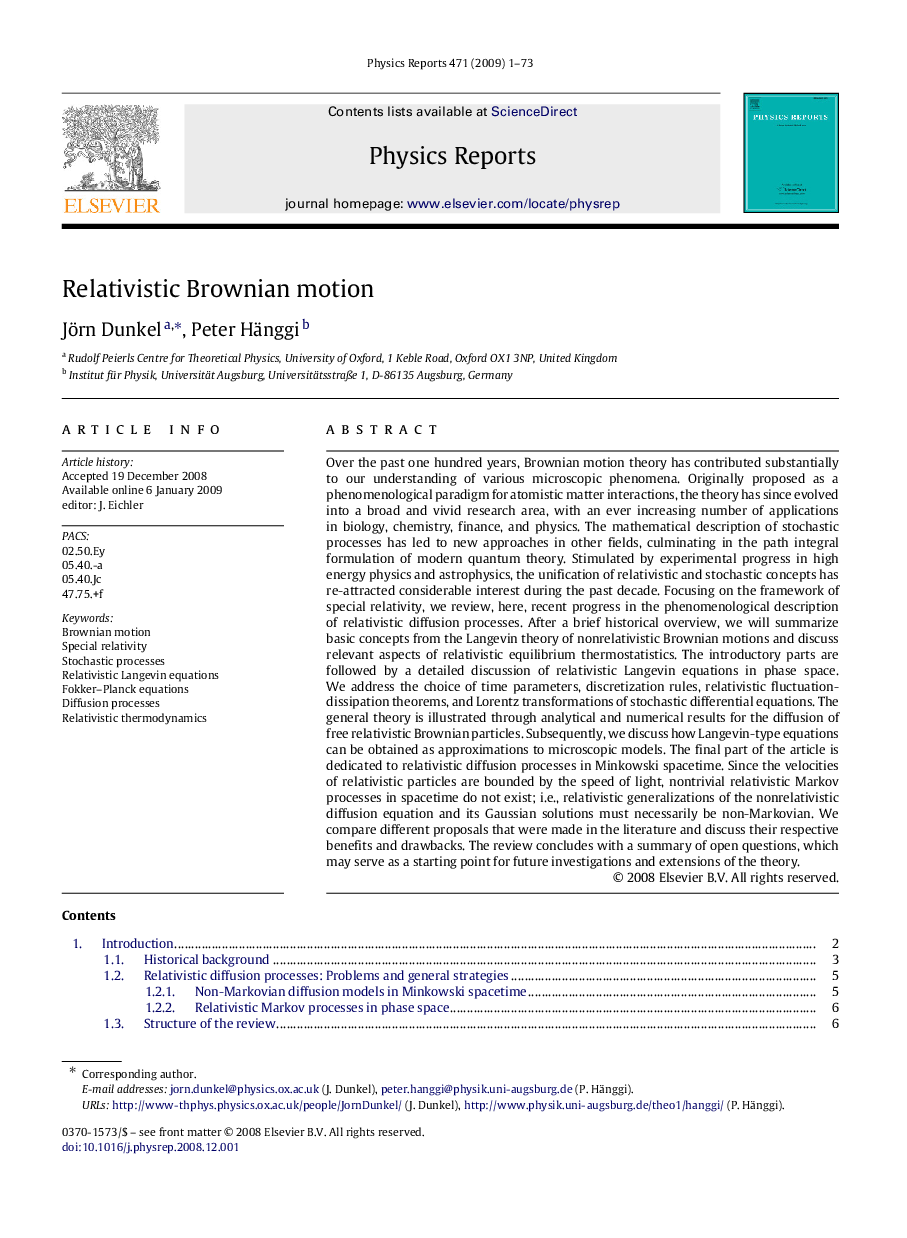| کد مقاله | کد نشریه | سال انتشار | مقاله انگلیسی | نسخه تمام متن |
|---|---|---|---|---|
| 1875254 | 1040590 | 2009 | 73 صفحه PDF | دانلود رایگان |

Over the past one hundred years, Brownian motion theory has contributed substantially to our understanding of various microscopic phenomena. Originally proposed as a phenomenological paradigm for atomistic matter interactions, the theory has since evolved into a broad and vivid research area, with an ever increasing number of applications in biology, chemistry, finance, and physics. The mathematical description of stochastic processes has led to new approaches in other fields, culminating in the path integral formulation of modern quantum theory. Stimulated by experimental progress in high energy physics and astrophysics, the unification of relativistic and stochastic concepts has re-attracted considerable interest during the past decade. Focusing on the framework of special relativity, we review, here, recent progress in the phenomenological description of relativistic diffusion processes. After a brief historical overview, we will summarize basic concepts from the Langevin theory of nonrelativistic Brownian motions and discuss relevant aspects of relativistic equilibrium thermostatistics. The introductory parts are followed by a detailed discussion of relativistic Langevin equations in phase space. We address the choice of time parameters, discretization rules, relativistic fluctuation-dissipation theorems, and Lorentz transformations of stochastic differential equations. The general theory is illustrated through analytical and numerical results for the diffusion of free relativistic Brownian particles. Subsequently, we discuss how Langevin-type equations can be obtained as approximations to microscopic models. The final part of the article is dedicated to relativistic diffusion processes in Minkowski spacetime. Since the velocities of relativistic particles are bounded by the speed of light, nontrivial relativistic Markov processes in spacetime do not exist; i.e., relativistic generalizations of the nonrelativistic diffusion equation and its Gaussian solutions must necessarily be non-Markovian. We compare different proposals that were made in the literature and discuss their respective benefits and drawbacks. The review concludes with a summary of open questions, which may serve as a starting point for future investigations and extensions of the theory.
Journal: Physics Reports - Volume 471, Issue 1, February 2009, Pages 1–73